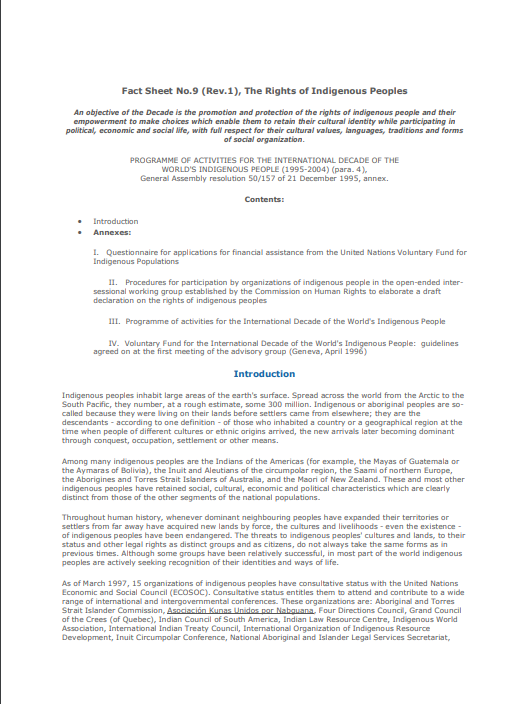
The Rights of Indigenous Peoples
Publication Year: 1995
Author(s): United Nations
Abstract:
Indigenous peoples inhabit large areas of the earth's surface. Spread across the world from the Arctic to the South Pacific, they number, at a rough estimate, some 300 million. Indigenous or aboriginal peoples are socalled because they were living on their lands before settlers came from elsewhere; they are the descendants - according to one definition - of those who inhabited a country or a geographical region at the time when people of different cultures or ethnic origins arrived, the new arrivals later becoming dominant through conquest, occupation, settlement or other means.
Source of Publication: United Nations
Publisher/Organisation: United Nations
URL:
https://www.ohchr.org/sites/default/files/Documents/Publications/FactSheet9rev.1en.pdf
Theme: Indigenous People | Subtheme: Indigenous People Rights
Related Documents
Training Materials

How to Do Note: Seeking Free, Prior and Informed Consent in IFAD Investment Projects
Published Year: 2015
Abstract:
Free, prior and informed consent (FPIC) is an operational instrument that empowers local and i... Read More
Training Materials

Abstract:
This Manual aims to support and strengthen the work of national human rights institutions (NHR... Read More



